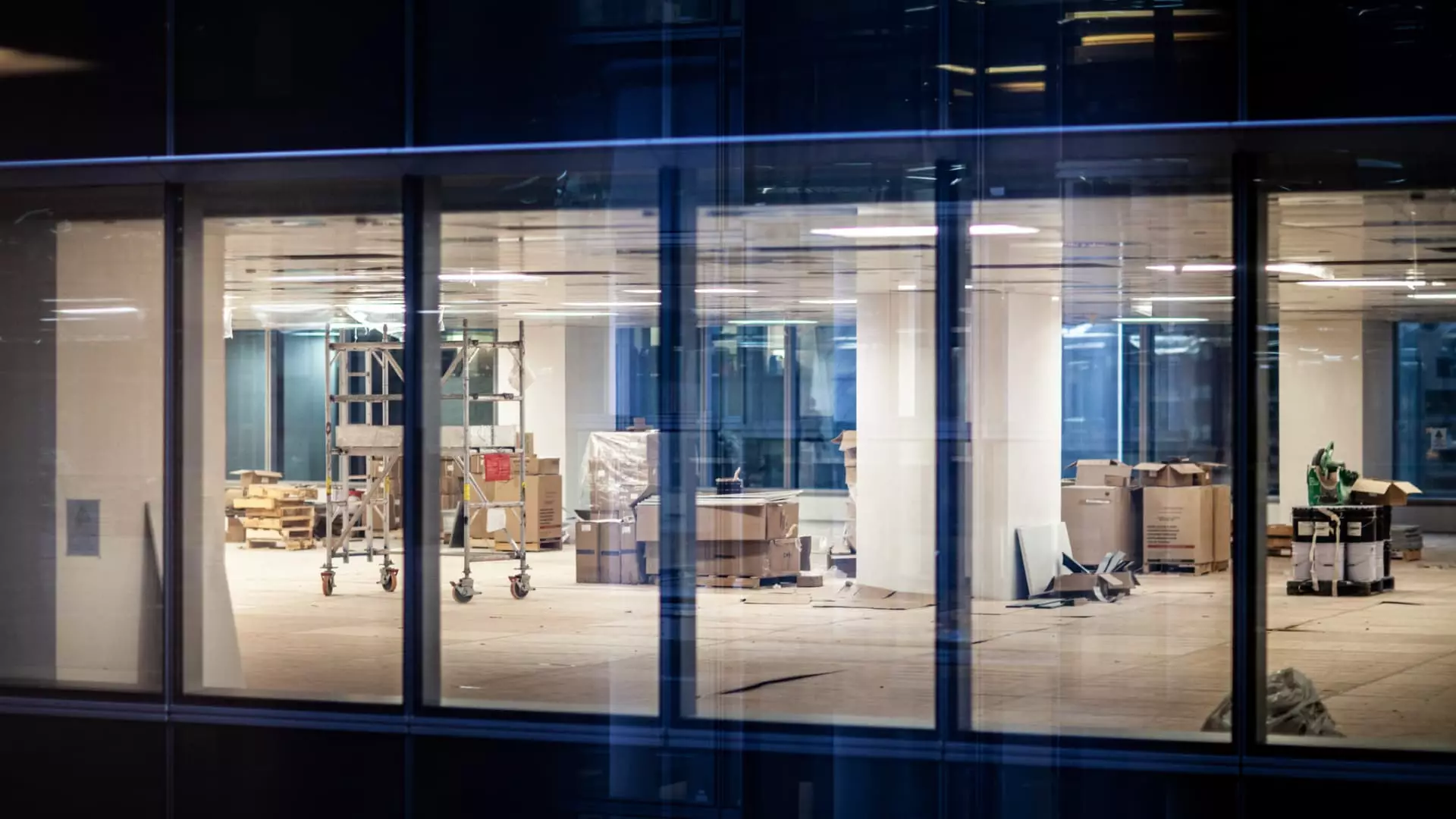The U.S. commercial real estate sector, particularly the office market, is facing a period of unprecedented instability and decline. After a tentative rebound earlier in 2023, recent months have revealed a stark contraction that raises serious questions about the resilience of this industry. The numbers speak volumes: demand has plummeted across most major markets, with a dramatic 23% drop in new tenant inquiries and a 26% decrease in total sought-after space in April alone. This isn’t a mere blip but an ominous trend suggesting deeper underlying issues. The steady decline echoes the turmoil felt during the banking crises of the prior year, indicating that the sector is highly susceptible to external shocks and policy changes.
What stands out, however, is the connection to geopolitical and economic uncertainties, notably tariffs and international conflicts. The increase in tariffs, often framed by policymakers as a tool to safeguard domestic industries, appears to be having an adverse spillover effect on the real estate landscape. Investors and potential tenants are reluctant to commit when the economic horizon is clouded with threats of escalation and unpredictable policy shifts. What might seem like a short-term inconvenience may very well herald long-term stagnation for the office market if these tensions persist or escalate.
Tariffs and Geopolitical Factors: The Fear Circuit Disrupting Investment
The impact of tariffs — a tool historically used to protect or pressure economic interests — has morphed into a destabilizing force in the real estate world. The recent escalation, as announced by the Trump administration, signals a return to protectionist policies that roil investor confidence. The immediate reaction has been a withdrawal from the market; demand has been restrained, and speculative activity has slowed dramatically. This is not merely an investor sentiment issue but strikes at the core of economic fundamentals, as increased tariffs raise costs and create uncertainty about future margins and returns.
Furthermore, international conflicts such as the Iran-Israel tension and the broader geopolitical chaos contribute to a climate of hesitation. Investors, who must navigate a complex web of risks, now find themselves wary of committing to long-term leases or property developments. The often-cited ‘tangled web’ of global politics becomes an invisible barrier, preventing the organic growth of office spaces. These external factors underscore a vital point: in a volatile world, speculative real estate becomes a risky gamble rather than a stable investment. The fear of escalation and unstable policy trajectories discourages fresh investments at a crucial juncture, jeopardizing a sector that was already grappling with structural shifts.
The Reckoning: A Market in Decline and Transition
Perhaps the most alarming aspect is the shifting landcape of supply versus demand. For the first time in decades, more space is being taken offline than added through new construction—a stark indicator of a contracting market. CBRE reports that 2023 will witness an overall reduction in available office space, reversing long-standing growth trends. Such a move signals a fundamental re-evaluation by developers and investors alike: the risk of overbuilding or holding onto obsolete properties outweighs the benefits of expansion.
This contraction is not just a temporary correction but a symptom of deeper structural issues. The pandemic accelerated the move toward remote work, and that trend has yet to reverse fully. Corporations are rethinking their real estate footprints, opting to downsize or abandon traditional office spaces altogether. Investors, increasingly wary of a prolonged downturn, are hesitating to fund new projects, fearing that the market’s structural decline will only deepen. The result is a brutal cycle of shrinking demand, rising vacancy rates, and decreasing property values, a scenario that threatens to reshape the commercial real estate landscape for years to come.
The Political and Economic Crosscurrents Worsening the Crisis
On top of economic and geopolitical concerns, domestic political debates around economic policy further muddy the waters. The ongoing uncertainty about how tariffs will evolve and the future economic policies of the government keep potential investors on edge. While some may see the rebound of equity markets as hopeful, the reality is that this optimism often ignores the fragility beneath. Markets tend to overreact to policy shifts, and in the case of commercial real estate, the hesitancy to commit new capital is a clear sign of underlying anxiety.
The combination of tariffs, international conflicts, and domestic political unease creates an environment where caution prevails. It is no longer merely a matter of supply and demand; it is a reflection of confidence—or the lack of it. The question now is whether this contraction will serve as a wake-up call for policymakers and investors to rethink their strategies, or if it will inevitably spiral into a prolonged period of decline and stagnation. The signs point toward a challenging road ahead, where stability is elusive and uncertainty rules the day.

